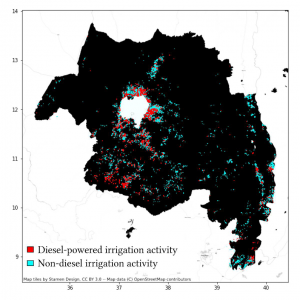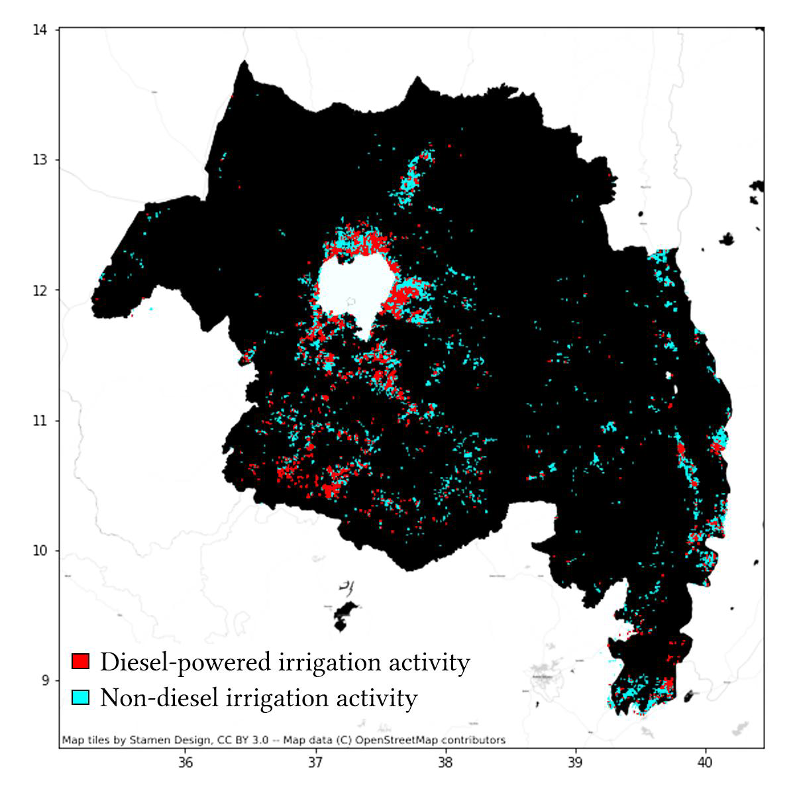For much of sub-Saharan Africa, agriculture is the primary economic driver and by far the largest sector for employment. This is well-known – development and evolution of the agriculture sector is high on the priority lists of many governments across the continent. As countries strive to accelerate development in order to improve livelihoods and meet the Sustainable Development Goals, there is increasing focus on finding efficiencies at the intersections of multiple goals. One prominent example is the nexus of agriculture and electric power.1
Due to its flexibility, potential for decarbonization, and local availability, electric power is increasingly seen as the most vital future source of energy for many, if not most, end uses. Since it can be provided both via large-scale investments in centralized generation and smaller-scale investments in distributed generation, electricity has substantial appeal for applications throughout agricultural value chains – from irrigation and mechanization to storage to post-processing. Leaning on electricity in agricultural applications can provide lower-cost, more resilient, and more economically-valuable food systems. For electricity systems, agriculture can provide a significant productive load, enabling predictable revenue streams and financial sustainability for power providers. Countries increasingly see the value in linking these two core sectors together – identifying opportunities where joint planning of electricity systems and agricultural investments can be symbiotic.
While this sounds promising in principle, what does it mean in practice? As development resources are always scarce, targeted allocation of investments can result in systems that build on each other – avoiding the pitfalls of underpowered agricultural systems or large electricity investments that languish from limited electricity demand. Further, as opposed to industrialization efforts that typically focus on cities and their surroundings, efforts to improve planning at the power-agriculture nexus can accelerate the pace of development in the often overlooked rural communities that depend so heavily on agriculture for livelihoods.
Our team — consisting of technologists from the STIMA Lab at the University of Massachusetts, Amherst, and the QSEL Lab at Columbia University in the USA, economists at RWI-Essen in Germany, and local experts at the Policy Studies Institute in Ethiopia — and with support from the Energy and Economic Growth Program (EEG) funded by the U.K. Foreign, Commonwealth and Development Office (FCDO), recently completed a research project demonstrating an innovative use of satellite data for assisting joint planning at the power-agriculture nexus in Ethiopia.2 EEG, a program operated by Oxford Policy Management, undertook a special effort to involve Ethiopian policymakers from the energy and agriculture sectors as well as utility stakeholders early in and throughout the process of research development. With Ethiopia’s focus on agricultural-led growth, opportunities to link these two vital sectors together were identified as priorities in advance of the EEG program soliciting research proposals.
Our project set out to identify existing diesel-driven irrigation activity in Ethiopia. To do so, we made heavy use of a variety of satellite-collected data sources, particularly on foliage growth and on emissions. More details about our technique are available in our research paper. The idea is that if we can identify existing diesel-powered irrigation, we can provide guidance to electricity system planners on areas to target, either via grid extension or with solar-powered irrigation systems depending on proximity to the existing grid. Since the rural areas that typically have significant agricultural activity have little other electricity consumption, identifying these potential electricity consumers can enable targeted investments that can serve as a foothold for electricity access expansion as well as crucial sources for livelihood growth in areas with limited other economic activity.
FIGURE 1: Satellite-derived predictions of locations of diesel-driven irrigation throughout the Amhara region in Ethiopia. Built on top of an irrigation prediction layer created by colleagues at Columbia University’s QSEL Laboratory.

One central goal of this research project was to demonstrate the viability of this technique. To be able to report on the accuracy of our new method, we also collected a ground truth dataset consisting of surveys of farmers and their irrigation activities, with over 6000 plot locations and their irrigation status collected in areas of the Amhara and Oromia regions of Ethiopia. We used this ground truth dataset to train a machine learning model that could use a combination of foliage and emissions information to identify areas with irrigation activity likely driven by diesel generators. While many confounding factors can affect emissions as measured from the troposphere, we found that we could correctly identify areas with diesel-driven irrigation activity 75% of the time; this is in comparison to the typical proportion of diesel-driven irrigation in our study area, which is 20%. Armed with a model like ours, we believe that a system planner would be nearly four times more effective at selecting areas with diesel-driven irrigation, resulting in electricity systems with a much higher chance of success as measured by improvement in livelihoods and financial sustainability of the electricity provider. Further, as satellite-based methods continue to improve in their frequency, resolution, and scope of measurements, our methods can become increasingly better at identifying diesel-driven irrigation activity.
We acknowledge that the limited scope of our ground truth dataset raises questions about how well our technique will generalize to other settings in Ethiopia and beyond. As future work, we are looking to characterize these challenges. We also maintain that while universal access is the ultimate goal, the path to get there matters – if selections of where to connect earlier can impact the success of programs, then it is beneficial to gain that momentum towards achieving SDG7. We presented our results to Ethiopian policymakers at two different workshops convened by the EEG program, in an effort to create a pathway for our innovations to scale and ultimately flow into practice. While much work remains, we are optimistic that the structure and engagement created by the EEG Ethiopia process is a step in the right direction for research innovation to yield development impact.
Crucial impediments to planning at the energy-agriculture nexus remain. Often, ministries, donors, companies, and NGOs operate in silos – and organizations develop with particular expertise and have difficulty growing networks beyond those areas. Many of the efforts needed to explore opportunities at the power-agriculture nexus are new, often requiring research, pilots, and case studies to emerge as scalable and replicable solutions. However, for researchers, innovation does not always connect with policy, since incentives in the research community push for novelty and marketability. This reward structure pushes for more funding and more papers, enabling researchers to burnish their credentials. However, this model does not incentivize the follow-through necessary to turn good research into ideas, methods, and systems that can achieve impact by shaping policy and ultimately improving livelihoods. Unfortunately, many promising innovations are left to wither away in dusty corners of the Internet. We believe that involving a range of stakeholders from multiple sectors early in and throughout the research development process, as was done in the EEG Ethiopia program, is an essential practice for ensuring that future innovations succeed in addressing nexus-style challenges.
Endnotes
- Banerjee, Sudeshna Ghosh; Malik, Kabir; Tipping, Andrew; Besnard, Juliette; Nash, John. 2017. Double Dividend: Power and Agriculture Nexus in Sub-Saharan Africa. World Bank, Washington, DC. © World Bank. https://openknowledge.worldbank.org/handle/10986/26383 License: CC BY 3.0 IGO.
- https://www.opml.co.uk/projects/energy-economic-growth


